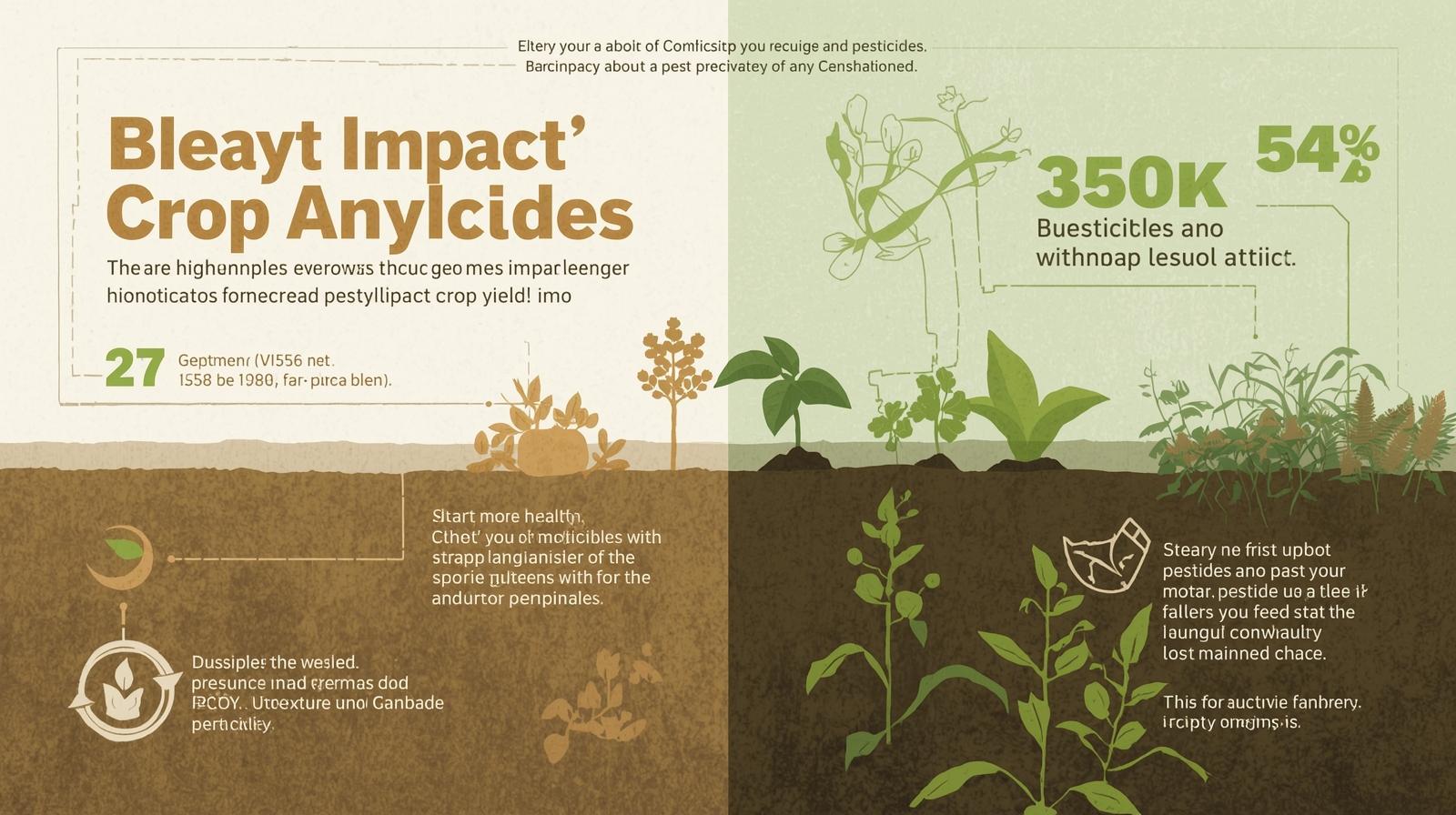Pesticide Misconceptions That Are Hurting Farmers’ Yields

Many farmers unknowingly fall into common pesticide traps that reduce yields instead of improving them. Understanding these mistakes and their solutions can save crops, money, and long-term soil health.
Why Farmers Still Struggle with Pesticide Use
For decades, farmers have relied on pesticide applications to safeguard crops from harmful insects, fungi, and weeds. Yet, despite the heavy use of these chemicals, yield losses remain stubbornly high in many regions. Farmers in Punjab, Sindh, and especially fertile zones like Okara, report that pests return stronger each season, resistant to the very products meant to eliminate them.
The problem is not simply that pesticides are “bad.” Rather, the challenge comes from how they are selected and applied. Many growers use outdated formulas, repeat the same chemical groups, or apply them at the wrong time of the crop cycle. These missteps create a cycle of reduced effectiveness, wasted money, and ultimately declining soil health.
When Wrong Choices Make Things Worse
Imagine a farmer in Okara spraying his wheat fields with a familiar pesticide brand that once worked well. This season, however, the pests barely slow down. Frustrated, he doubles the dose, hoping a stronger hit will do the job. Instead, his crop begins to show stress: yellowing leaves, reduced tillering, and slower grain filling. By harvest, yields are down nearly 15%.
This isn’t just one farmer’s story it’s a pattern across many farming communities.
When pesticides are misapplied:
-
Pests can develop resistance, meaning stronger and more costly chemicals will be required in the future.
-
Crops may suffer “phytotoxic” effects, showing burns, stunted growth, or reduced fruiting.
-
Farmers unknowingly damage beneficial insects like pollinators, further weakening the ecosystem.
-
Soil biology can decline, making fertilizer applications less effective over time.
Even worse, money spent on repeated treatments often exceeds the actual yield benefit. That turns what was meant to be an investment into a heavy financial burden.
A Real Case Study from Okara
In 2022, a mid-sized potato farmer from the outskirts of Okara faced exactly this problem. He had been using the same insecticide for three consecutive seasons. Initially, it worked well, but by the fourth season, whiteflies and leaf miners barely responded. His plants suffered curling leaves and patchy growth.
Instead of switching products strategically, he applied the same pesticide more frequently. Costs skyrocketed, yet his harvest dropped nearly 20%. The farmer consulted a local agriculture expert who redesigned his approach:
-
Rotating between different classes of pesticides to prevent resistance.
-
Integrating natural controls like neem-based sprays and biological agents.
-
Adjusting application timing to match the pest life cycle rather than following a fixed schedule.
-
Combining balanced nutrition, including targeted fertilizer in Okara, to strengthen the crop’s natural defense.
Within a single season, pest populations decreased, crop vigor improved, and his yield losses shrank to less than 5%. By the second season, his costs also stabilized, proving that professional guidance could transform a failing strategy into a profitable one.
Smarter, Targeted Approaches
The biggest myth is that more pesticide equals more protection. The truth is the opposite: smarter use beats heavier use. Farmers who adopt integrated pest management (IPM) strategies see long-term success.
Smarter Pesticide Strategies Include:
-
Rotation of chemistry groups: Switching active ingredients ensures pests don’t build resistance.
-
Precision timing: Applying chemicals at the right pest stage, not just on a fixed calendar.
-
Mixing with nutrition: Using balanced fertilizers alongside protection builds stronger plants.
-
Reduced dependence: Combining biological agents, resistant crop varieties, and cultural practices to reduce chemical reliance.
Farmers in regions like Okara, where soil is rich but pest pressure is high, benefit greatly from blending protection with nutrition. For instance, pairing pesticide applications with site-specific fertilizer programs ensures plants are not only shielded from damage but also strong enough to recover quickly.
Why Farmers Resist Change
Many farmers stick to old methods for one reason: trust. If a product worked once, they assume it will always work. However, pest dynamics are changing every season. Climate shifts, new resistant strains, and evolving cropping systems make yesterday’s solution ineffective today.
Additionally, the fear of losing a harvest often pushes farmers to “play it safe” with high doses. Unfortunately, this short-term insurance leads to long-term damage. Breaking this cycle requires both education and visible proof like the Okara case study above that alternatives truly work.
Building Sustainable Protection for the Future
Farming is no longer just about fighting pests it’s about building resilience. Every farmer should ask: Am I just spraying chemicals, or am I building a system where my crops can thrive despite challenges?
By adopting sustainable pesticide strategies, farmers can:
-
Save money by avoiding unnecessary applications.
-
Protect soil fertility, ensuring fertilizers remain effective.
-
Reduce pest resistance, lowering the risk of future outbreaks.
-
Maintain healthier crops, boosting both yield and quality.
When pesticide and fertilizer strategies are integrated, especially in high-production areas like Okara, the results speak for themselves: stronger harvests, reduced costs, and healthier farming systems.
Conclusion
Pesticides are not the enemy but poor decisions around them are. Farmers who cling to outdated habits risk falling into cycles of resistance, crop stress, and wasted money. Yet with the right mix of expert advice, smarter application, and balanced crop nutrition, yields can rise while costs fall.
If you’re a grower in Okara or anywhere across Pakistan, don’t let old myths cost you another harvest. Reach out to trusted agriculture experts today and explore how modern pesticide strategies, paired with balanced fertilizer programs, can transform your fields. Your next season’s success may depend on the decisions you make right now.
- Art
- Causes
- Crafts
- Dance
- Drinks
- Film
- Fitness
- Food
- Games
- Gardening
- Health
- Home
- Literature
- Music
- Networking
- Other
- Party
- Religion
- Shopping
- Sports
- Theater
- Wellness


